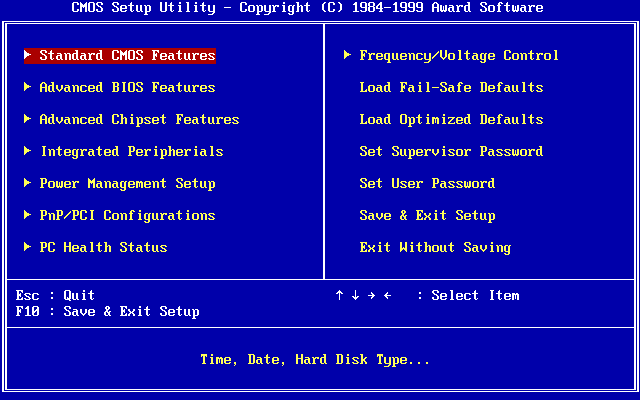Today we are looking at how the BIOS vs UEFI adds benefits to our computing experience. This guide talks a little about the history and uses of both the BIOS and UEFI.
The Basic Input/Output System or BIOS is a precursor to the newer and more advanced Unified Extensible Firmware Interface also known as UEFI.
A Brief Comparison Between BIOS vs UEFI
The BIOS dates back to 1975 when it first appeared in the CP/M operating system. In geeral the BIOS can be described as the Motherboard’s firmware. In the days of DOS (MS-DOS, PC DOS or DR-DOS), the BIOS was contained in the DOS BIOS files usually going by the names of io.sys, ibmbio.sys, ibmbio.com or drbios.sys and resides in the Read Only Memory (ROM).
Early versions of the BIOS had no user interfaces and to change the configurations and settings you had to physically move the jumpers on the computer circuit boards. However that obviously was not going to last very long with the growing crop of computer engineers . The next logical thing was to therefore get a better and richer software interface.

What the BIOS is Responsible For
The BIOS can do several things but most importantly its basic use is to handle things from the time a computer is booted up. The BIOS checks the basic configuration of basic components plugged into the mother board. It does a Power On Self Test (POST) to check the compatibility of the RAM, the hard drives, external and optical drives and more.
If there is an error appropriate action is taken by either attempting a fix or simply printing the message to the screen. Assuming all goes well, the BIOS would then start the operating system and hand over control to it or to the Boot Loader . BIOS systems are generally operating system independent pieces of software.
How Does the UEFI Differ From the BIOS?
When it comes to BIOS vs UEFI head to head, UEFI can be described as a BIOS on steroids. Over the years BIOS systems have worked just fine and probably still do today. TO be honest, we are more interested in the workings of an operating system than the underlying BIOS. Well you may argue that BIOS has its place like in terms of over cloaking of CPUs which need to be done at the BIOS layer. That is a whole topic on its own.
The need for an improved BIOS system was evident with the growth and reduction in price of hardware. Traditional BIOS systems as we knew them suffered from the historical limitations they inherited.
BIOS boot systems unfortunately were unable to handle storage drives with partitions larger than 2 TB and therefore a need for UEFI became evident. Again with more and more configuration requirements and settings especially with large computer system setups, modding by PC rig enthusiasts and a whole lot of custom rigs then UEFI seemed to be the only way forward.
Some of the improvements of BIOS vs UEFI is that UEFI addresses issues such as Secure, CSM, Network and UEFI Booting. It also allows remote diagnosis of computer systems even without having to be in the operating system. It also features graphics systems rather than text based consoles, It deals with several protocols, handles time services and applications all within itself.
As of this writing support for UEFI is available with Itanium, x86, x86-64 processors from Intel. ARM (AArch32) and ARM64 (AArch64) also feature on this list. It is also important to note that currently it is only little-endian processors that are supported.
UEFI as we can see is much more than a basic system that confirms the hardware and hands over to a boot loader or operating system. It is much than that and can be used as an operating system independent application dealing with several hardware, diagnostic and configuration related tasks on your computers.
Ref:
IBM Technical Reference Manual: http://www.reenigne.org/crtc/PC-XT.pdf
Gary Kildall: https://en.wikipedia.org/wiki/Gary_Kildall
Extensible Firmware Interface: http://www.intel.com/technology/efi/
Found this article interesting? Follow Brightwhiz on Facebook, Twitter, and YouTube to read and watch more content we post.